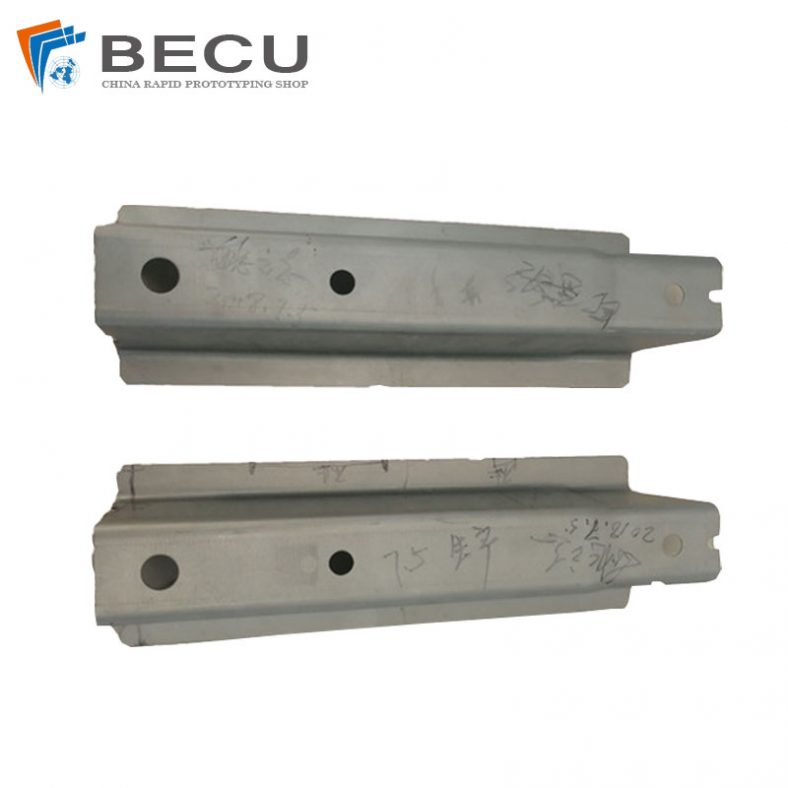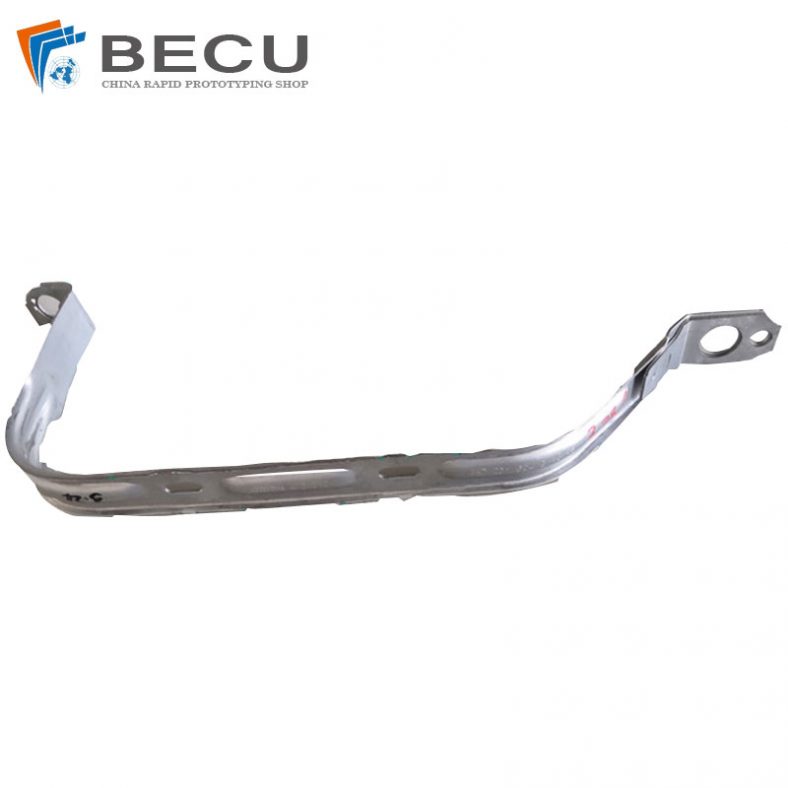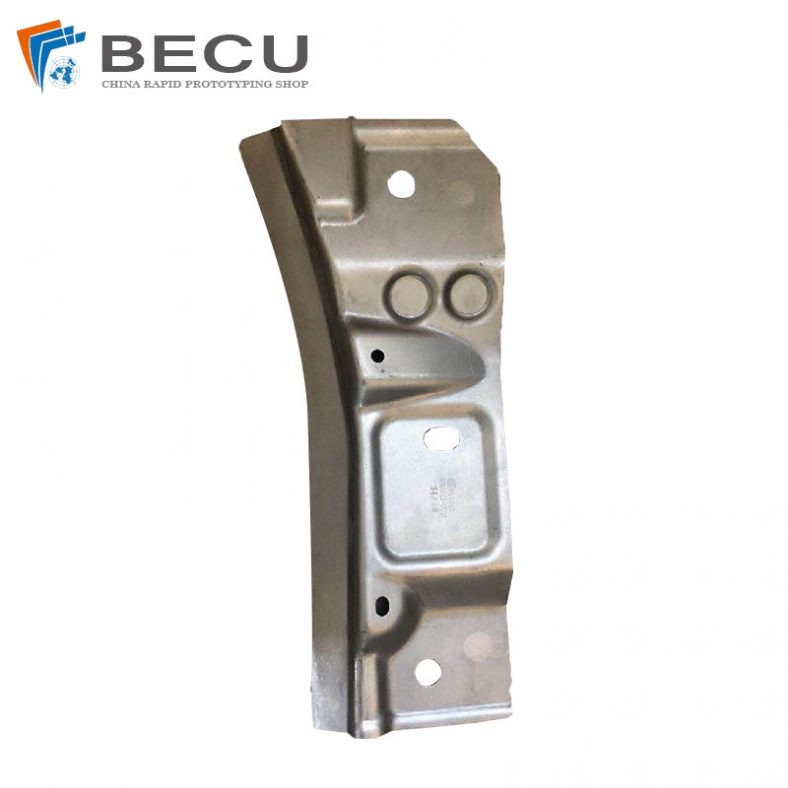In recent years, the demand for light weight and improved safety performance has led to a significant increase in the application ratio of high-strength steel in automobile bodies.Among them, advanced high-strength steels have also attracted much attention and attention due to their high strength and good formability. QP steel (quenching & partitioning steel), as the most representative third generation advanced high strength steel (3rd generation advanced high strength steel, 3rdAHSS), has ultra-high strength, and the TRIP effect (solid phase phase) during the deformation process.change) so that the steel has good formability at the same time. At present, QP steel is mainly used for body safety structural parts, especially difficult-to-form parts.

QP steel has been in practical application for a short period of time, and the study of the forming characteristics of QP steel is a necessary premise to promote the further application of this steel. GAO XL et al. predicted the FLC of QP980 according to the fracture criterion through Nakazima test and observation of fracture morphology.
Using the DIC method, DING L et al. studied the effect of strain rate on the fracture properties of QP980 material, and the results showed that the increase of strain rate would accelerate the transition from diffusion necking to local necking, resulting in a decrease in material formability.
Diao Keshan et al. found that the formability of QP980 is better than that of DP980, which is comparable to that of DP780, and verified the above conclusion through the test punching of complex samples. QP steel is also suitable for hydroforming, and its formability is better than that of the same level. DP steel. DU HJ and others used QP980 instead of DP600 for the production of the B-pillar reinforcement plate of a certain vehicle model, which achieved a weight reduction of 2.4 kg and a cost reduction of 30% for a single part without losing crash performance.
The increase in strength will lose the formability of the material to a certain extent, and there are certain difficulties in the design and process development of high-strength steel parts. The key parts with relatively complex shapes are mostly hot formed, but the relatively high development cost limits the application of hot stamping parts. The ultra-high strength and good formability of QP steel make it have the potential of “replacing heat with cold”. From the perspective of material application, the research analyzes the material properties of QP980, and analyzes the formability of the rear part of the front longitudinal beam of a certain vehicle model, and proposes optimization and improvement measures, which provides the further application of QP steel in similar deep-drawn parts. Useful reference.
QP980 Material Property Analysis
The HC600/QP980 steel plate with a thickness of 1.6 mm produced by Baosteel was used for material property testing. The main chemical components are shown in Table 1. The optical microstructure is shown in Figure 1, which consists of three phases of ferrite (F), martensite (M) and retained austenite (A). Among them, the retained austenite is mostly distributed in the structure in the form of islands. During plastic deformation, the retained austenite undergoes solid-state transformation (ie, the TRIP effect), which avoids premature stress concentration and improves the formability of the material. The content and stability of retained austenite have a significant impact on the TRIP effect, and its stability is more critical to the formability of the material.
The tensile test results show that the tensile strength of QP980 is about 1 072 MPa, and the uniform elongation can reach 20%. The main tensile properties are shown in Table 2. The hardening index (n value) is an important index to measure the deformation ability of the material. The larger the n value, the stronger the ability of the material to prevent premature local deformation. For ultra-high strength steels, the value of n has obvious transient effects. Taking the engineering strain of 1% as the step size, the stress-strain curve is fitted and calculated in sections, and the transient n-value distribution of different strain ranges is obtained, as shown in Figure 2. The n value of the QP980 material shows a characteristic of a steady increase and maintains a high index at the end of the uniform deformation, which is due to the TRIP effect during the deformation process to improve the deformation ability of the material. QP steel can be used for structural parts with relatively complex shapes, large deformation and high strength.
The forming limit curve is usually used to measure the maximum deformation capacity that the sheet material can achieve before fracture failure occurs. The FLC curve of the HC600/QP980 sheet with a thickness of 1.6 mm measured by the Nakazima test method is shown in Figure 3, where the lowest point FLC0=21%.
Parts Manufacturability Analysis And Finite Element Analysis
The rear section of the front longitudinal beam is located at the rear of the longitudinal beam assembly and under the front and bottom of the dash panel, and is the main force transmission path during a frontal collision, as shown in Figure 4. In order to protect the safety of the passenger compartment and reduce the amount of collision intrusion, this part is mostly formed of high-strength steel or ultra-high-strength steel to avoid bending deformation during the collision.
Process Layout
The parts are of irregular shape, the section in the X direction changes greatly, the Y direction is asymmetrical, and the ends are fully open, as shown in Figure 5. The modeling feature determines the difficulty of forming and springback control of the part. The process plan of the part is set as: deep drawing, laser cutting, and side shaping.
Formability Simulation Analysis
The numerical simulation software AutoForm is used to carry out full-process forming and springback simulation analysis of the parts. The finite element model of the drawing process is shown in Figure 6, and the simulation material parameters are shown in Tables 3 and 4. The strengthening model is a Swift/Hockett-Sherby hybrid model, and the yield model is the Hill model.
The deep drawing formability and safety margin are shown in Figure 7. The main defects of deep drawing of this part are cracking and wrinkling. One of the cracks occurred at the top fillet, which is also the deepest part of the drawing, and the other crack occurred in the sidewall. Wrinkles appeared on the process supplement surface and the product surface of the part in the first 3 mm of deep drawing, as shown in Figure 8. Considering the differences in the software’s wrinkle determination criteria, it is believed that the wrinkle on the supplementary surface of the process can be eliminated in actual production, but the wrinkle on the surface of the part needs to be avoided in the product design process.
Formability Improvement Measures
The Analysis Of Cracking Reasons And Improvement Measures
The QP980 material has good formability, and the uniform elongation and n value are over 20% and 0.145, respectively, which are much higher than 9% and 0.089 of the same strength DP980, which can be used for the forming of deep drawing parts. The rear section of the front longitudinal member is a typical deep-drawn part, with a maximum deep-drawing depth of 118 mm. It can be seen from FLD that the two cracks are located in the general deep drawing area, and no bulging and unidirectional deep drawing occur. The cracks are caused by excessive principal strain. Observe the material flow direction, which is consistent with the principal strain direction. Therefore, the cracking situation can be improved by reducing the flow resistance. The initial draft angle of the part is 3.25°~13.8°, and it is recommended to increase the draft angle to more than 10°. Increasing the draft angle not only helps to improve the feeding situation, but also leaves enough space for subsequent springback compensation. The top fillet has a sharp shape change, and the material forming resistance is large. Appropriate spheroidization of this part is beneficial to reduce the main strain and improve the formability. The rounded corners are spheroidized with a radius of R100 mm, reducing the overall punching height by about 9 mm.
The bending properties of ultra-high strength steels are relatively poor, and the bending properties of QP steel are excellent due to the presence of austenite and ferrite. The test shows that the radius of the HC600/QP980 sheet with a thickness of 1.2 mm can reach a minimum of R0.5 mm when it is bent at 90°, and the design radius of the inner fillet of the part is R8 mm. In order to further improve the material inflow, the top chamfering radius of the part was increased to R12~R15 mm, and the bottom flanging fillet radius was optimized to R10~R12 mm.
Wrinkle Cause Analysis And Improvement Measures
Wrinkling can be divided into two types: unstable wrinkling and accumulation wrinkling. Unstable wrinkling is mainly caused by uneven deformation of the sheet under the action of compressive stress, uneven tensile stress and shear stress; The material cannot fit with the mold during the flow process, and the area of the sheet material in the local area is larger than the surface area of the corresponding mold part, resulting in the excess material that cannot be absorbed, resulting in accumulation and wrinkling. The section line near the first 5 mm of the drawing bottom is shown in Figure 9. At this time, the wrinkled area is still in a suspended state, and the length of the transverse (perpendicular to the section direction) material section line is greater than the length of the mold part section line. The wrinkling on the surface of the part at this position belongs to the accumulation wrinkling. In order to absorb the excess material, deep drawing beads or grooves can be set at the wrinkled position. After trying, an improved solution of adding a groove with a depth of 5 mm to absorb excess material was finally adopted.
Validation Of Improvement Measures
Through preliminary formability simulation calculation and failure analysis, the parts are optimized and improved as follows: ①The draft angle is increased to more than 10°; ②The top fillet at the cracking position is spheroidized with R100 mm; ③The top chamfer and The inner radius of the root chamfer is optimized to R12~R15 mm and R10~R12 mm respectively; ④Increase a wrinkle suction groove with a width of 15 mm and a depth of 5 mm at the top of the front end of the product.
The whole process simulation analysis of the improved parts is carried out by using AutoForm software, and the deep drawing formability and safety margin are shown in Figure 10. The cracking and wrinkling on the surface of the original parts were improved, indicating that the above measures were effective.
Part development and debugging are carried out according to the rectified plan, and the actual blanking part is shown in Figure 11. In actual development, the sidewall curling and normal springback of the rear part of the front longitudinal beam are too large, which increases the workload of debugging. Through the repeated debugging of the mold, the development of this part has achieved no cracking, wrinkling and other phenomena, and the parts meet the dimensional tolerance requirements.
Conclusion
The microstructure and basic mechanical properties of HC600/QP980 produced by Baosteel were studied. The research results show that the QP980 material has good formability and can be used for the forming of deep-drawn parts, and has the process potential of “replacing heat with cold”. Select the parts of the rear section of the front longitudinal beam with relatively complex shapes and deep drawing depth to carry out the application research of QP980 material.
Through the optimization of the draft angle, chamfering radius and local features of the parts, the QP980 front longitudinal beam that meets the quality requirements has been successfully developed. Beam back section part. Due to the high strength of QP steel, the springback problem has greatly increased the development workload. In the future, more in-depth research can be carried out on the springback control problem of QP steel parts.
Sheet fabrication services for mild steel, high strength low alloy (HSLA) steel, cold/hot rolled steel, galvanized steel, stainless steel, aluminum, copper and brass. Capable of fabricating parts up to 12 ft. length and +/-0.001 in. tolerance. Various capabilities include contract manufacturing,custom stamping,edge rolling, forming,top laser cutting, roll bending and welding. Finishing and secondary services such as hardware installation, tapping, deburring, cleaning, heat treating, plating, anodizing and painting available. Sheet Metal Prototype and low to high volume production runs offered. Suitable for commercial/residential architectural, aluminum brake shape parts, wall panel systems, brackets, general flashings, rails, call button plates and ship building component parts.




